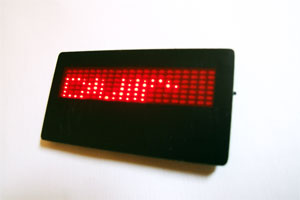 In the future, will you get late-night pages from your furnace?
In the future, will you get late-night pages from your furnace?
photo by: philcampbellAn increasing amount of research at the DOE national laboratories, the Florida Solar Energy Center, and elsewhere is showing that energy efficient homes are not the result of efficient technology alone. Efficient homes result from efficient technology and the will and aptitude of the people controlling that technology—the people living and working in those homes.
I’ve been thinking a lot about cell phones, since I finally just got one myself. Millions (billions?) of people around the world who don’t know the difference between a BTU and a kWh are experts at phoning, e-mailing, texting, surfing the Web, and watching TV using a device that fits in their pocket without making a noticeable bulge. Maybe the answer to our home energy challenges is to attack them with our iPhones?
Patti Harper-Slaboszewicz, Senior Director, AMR and Demand Response with UtiliPoint International, an energy and resources consulting firm, thinks a lot about the future of home energy management systems. In the UtiliPoint e-newsletter Issue Alert, Harper-Slaboszewicz writes:
"More and more devices will include communications—dryers, washers, air conditioners, heaters, refrigerators, lights, hot water heaters, coffee pots, microwaves, ovens, fans, humidifiers, cars, bicycles, freezers, pumps, sprinklers, sensors, outdoor lighting—to the Internet."
Imagine it’s 2020 and you are taking BART (running on 100% biodiesel produced from Switchgrass) into the City to your job directing the organic farm at Golden Gate Park. Harper-Slaboszewicz writes, “Your washing machine may ‘ping’ you to let you know the load is done. A sensor may communicate to the air conditioner that it's cooler outside than inside. Another sensor may communicate that it's too windy for the sprinklers to continue to run.” So you pull out your iEverything and go to the icon for home energy management on the touch screen, to tell your air-conditioner to take a rest, to stop the once-a-month drought-tolerant plant watering sprinkler system, and to turn your washing machine to dryer mode. It’s cheaper to do your wash in the morning before peak hours in the afternoon when energy prices triple. PG&E produces 80% of it’s energy from renewable fuels, but the rest comes from coal, which carries a huge carbon tax; oil, which is $250 a barrel; and natural gas, which comes to us from a foreign country, Alaska.
